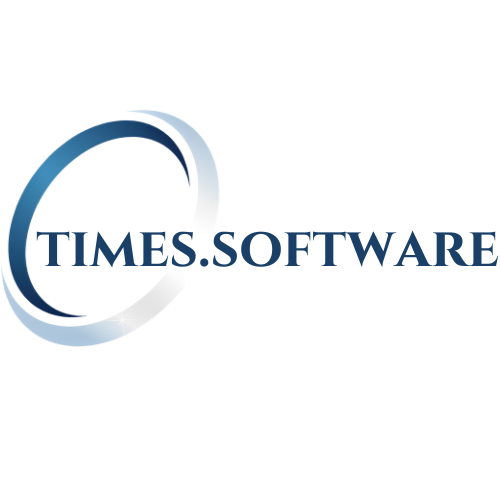
Explore how Trivago USA rose to the top of the travel industry with its cutting-edge branding and SEO strategies. This in-depth article uncovers Trivago’s approach to smart digital marketing, data-driven content, and search engine optimization that helped the brand dominate the competitive online travel space. Learn about their use of local SEO, mobile-first design, user experience optimization, and more — a must-read for marketers and travel brands aiming to boost their visibility and conversions.
Table of Contents
Introduction: Using Strategic Precision to Rethink Travel Search
Trivago USA has become a major force in the crowded online travel and lodging market thanks to astute branding strategies and a strong, data-driven SEO approach. We analyze how Trivago USA is outperforming rivals and gaining market share in the fiercely competitive digital travel sector.
Creating a Distinctive Brand
Stressing Messaging Simplicity
Millions of people were influenced by Trivago’s distinctively simple messaging, particularly the “Hotel? Trivago.” ad. Simple, straightforward, and repeating message helped the brand become instantly recognizable.
A Uniform Visual Identity
Trivago guarantees a unified brand experience that increases customer trust and memory thanks to its simple blue and white theme, standardized font style, and minimalist user interface (UI) across all platforms.
Accurately Targeting Micro-Moments with SEO
Using Intent-Based Keywords to Your Advantage
Trivago USA uses long-tail keywords like “best deals on Las Vegas hotels” or “cheap hotels in New York near Times Square” to successfully target transactional and commercial search intent. Local SERPs are dominated by these extremely narrow search phrases, which also convert better.

Landing pages that are geotargeted
To help cities, municipalities, and even neighborhoods rank for geo-modified keywords, Trivago develops landing pages specifically for these locations. This hyper-focused approach raises customer satisfaction and local SEO rankings.
Content that Ranks and Converts
Comparison Pages for Hotels
Trivago provides dynamic, comparison-based hotel results with user-specific filters instead of static listings, making it easier for both users and search engines to find pertinent material fast.
User-Submitted Evaluations and Signals of Trust
Trivago increases credibility by incorporating trust badges and real-time ratings. This enhances conversion rates and helps with on-page SEO through rich keyword inclusion and frequent content updates.
Understanding the Basics of On-Page SEO
Improved Meta Descriptions and Titles
To increase CTR in search results, every Trivago page has specially crafted meta titles and descriptions that are brimming with pertinent keywords, location indicators, and calls-to-action.
Markup Schema for Rich Snippets
Trivago improves visibility and trust in SERPs by obtaining rich snippets from structured data, such as availability, price range, and hotel rating schema.
Performance-Driven Technical SEO
A Mobile-First Strategy
Given that mobile searches now account for the majority of travel-related queries, Trivago guarantees blazing-fast load times, user-friendly mobile interfaces, and intuitive mobile user experience.
Optimization of Core Web Vitals
By emphasizing Cumulative Layout Shift (CLS), First Input Delay (FID), and Largest Contentful Paint (LCP), Trivago maintains compliance with Google’s most recent ranking signals while providing a flawless user experience.
Building Links and Optimizing Off-Page
Syndication of Strategic Content
Trivago obtains high-authority backlinks from collaborations with travel blogs, lodging websites, and tourism boards, which improves the domain’s reputation and ranks.
Digital PR and Press Coverage
The company makes use of PR-driven backlinks and noteworthy efforts, which over time increase domain authority and offer evergreen link equity.
Making Use of Visual and Video Content
Ad Retargeting and YouTube Campaigns
Trivago USA integrates SEO-optimized YouTube content, helping them appear in video SERPs. Their eye-catching video advertisements boost engagement and dwell time.
Optimization of Visual Search
Trivago USA optimizes photographs with informative alt text, titles, and file names to make them easily discoverable through Google photographs, in line with the growing use of visual search in travel.
CRO Strategies and Retargeting
Adaptive Retargeting
Trivago improves conversion rates by using retargeting advertisements to show customized hotel deals based on user interactions and behaviors.
A/B Testing of User Interface Elements
Trivago can continuously enhance its conversion funnel by experimenting with headlines, calls to action, and picture placements.
Multilingual Strategy and Localization
Variants of Customized Language
Trivago USA provides localized experiences in Spanish and other languages, improving accessibility and user pleasure since it recognizes that the U.S. market is heterogeneous.
Cultural Sensitivity in Communications
Better involvement and trust are made possible by campaigns that are customized to local travel preferences and cultural quirks.
Community Involvement and Social Proof
Influencer Partnerships
Trivago USA develops genuine travel narratives that appeal to millennial and Gen Z tourists by collaborating with micro and macro travel influencers.
Integration of Social Media SEO
To bolster brand signals, Trivago USA uses user-generated content, geo-tags, and SEO-friendly hashtags on social media sites like Facebook and Instagram.
Analytics and Decisions Based on Data
Monitoring SEO KPIs Carefully
Thorough monitoring of bounce rates, page dwell time, organic CTR, and conversion routes, which enables ongoing optimization, is the key to Trivago’s SEO success.
Mapping the Customer Journey
Trivago USA ensures a seamless user experience by optimizing user flows from discovery to booking using behavioral data.
Read Also:
Millennium Hotels and Resorts (Global) Review: Comfort, Class, and Convenience Worldwide
Discover Paradise with Melia Hotels International – PARADISUS (US): Resorts Redefined
How Nothing Tech – UK Is Disrupting the Smartphone and Audio Market
Discovering Oberoi Hotels: Global Luxury Redefined
How to Maximize Event Sales with oeticket.com AT
Top Digital Marketing Lessons from Surfshark IT’s Growth Strategy
Marketing Insights from the Growth of Test Your Intolerance
The Path Ahead: Integration of AI and Innovation
AI-Powered Suggestions for Search
Trivago is starting to utilize AI to tailor hotel recommendations and search results according to user activity and past reservations.

Optimization of Voice Search
As smart speakers become more popular, Trivago USA is making sure it ranks for conversational search terms like “Find me the best hotel in Miami.”
Conclusion: A Success Formula for SEO and Branding
The experience of Trivago USA demonstrates that a strong online presence may be achieved by fusing SEO rigor with clear branding. Trivago is an excellent example of how travel firms can simultaneously dominate search rankings and consumer minds thanks to its technical optimization, user-centric techniques, and richness of content.
Frequently Asked Questions
Q. What SEO strategies does Trivago USA use to rank higher in search results?
A. Trivago USA leverages intent-based keywords, geo-targeted landing pages, schema markup for rich snippets, and high-quality backlinks from travel-related websites to enhance its search visibility. They also focus on a mobile-first approach, optimize core web vitals, and ensure fast page loads for better user experience and SEO ranking.
Q. How does Trivago enhance user experience on its website?
A. Trivago enhances user experience by offering a clean and intuitive design, easy-to-use filters, and detailed hotel comparison pages. It also ensures the website is mobile-friendly, responsive, and optimized for fast loading times to provide a seamless browsing experience across devices.
Q. What role does content play in Trivago’s SEO success?
A. Content is key to Trivago’s SEO success. They utilize hotel comparison pages, user-generated reviews, and SEO-optimized videos. These elements not only improve content relevance but also boost user engagement and conversion rates, both of which signal search engines to rank their pages higher.
Q. How does Trivago use social media for branding and SEO?
A. Trivago utilizes social media SEO by integrating SEO-friendly hashtags, geo-tags, and user-generated content on platforms like Instagram and Facebook. They also collaborate with influencers to enhance brand visibility and engage directly with their audience, which drives organic traffic to their site.
Q. What’s the importance of data in Trivago’s SEO and marketing strategies?
A. Trivago makes data-driven decisions by analyzing SEO KPIs like bounce rates, page dwell time, and conversion paths. They continuously optimize their website based on this data, ensuring a frictionless user journey from discovery to booking. This data-centric approach helps maintain their competitive edge in the travel industry.

Add a Comment